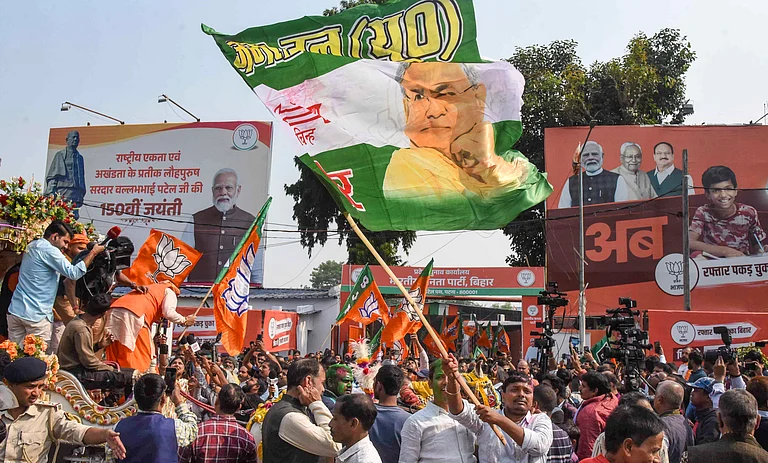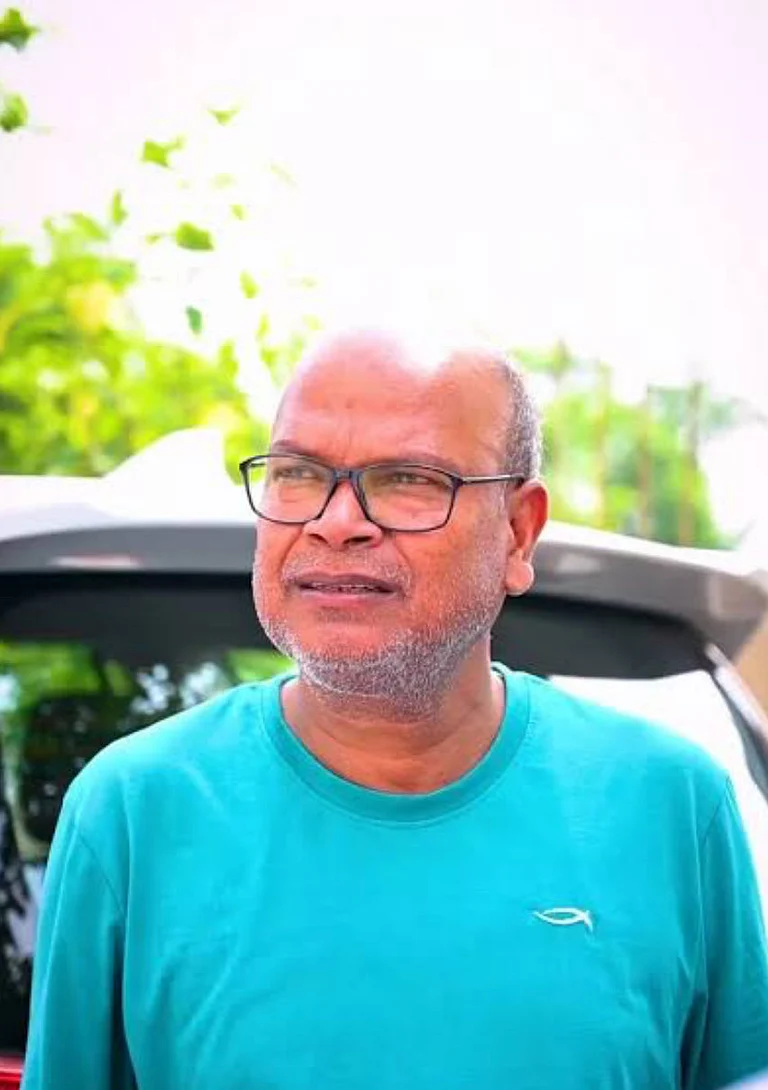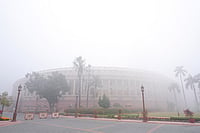
Bihar election has always been fiercely contested, with Dalit voters playing a crucial role in government formation
This election, the focus has largely been on the OBC vote bank and the consolidation of the upper caste vote. The 20 per cent Dalit vote remains largely overlooked
Out of 243 seats, 38 are reserved for SCs. In the last three Assembly elections, those who won the most SC reserved seats ended up forming the government
Jayprakash Narayan, famously known as JP and Lok Nayak, was from Bihar, who coined the slogan of Sampurn Kranti in the mid-1970s against Prime Minister Indira Gandhi. He once stated that the caste system is the biggest political party in India. His statement is the lived reality in India’s election, most prominently in Bihar.
On October 23, the Mahagathbandhan announced Rashtriya Janata Dal (RJD) leader Tejashwi Yadav as its chief minister candidate and Vikassheel Insaan Party (VIP) chief Mukesh Sahani as its deputy chief minister candidate. Tejashwi belongs to the Other Backwards Classes (OBCs), while Sahani is from the Extremely Backward Class (EBC).
Presently, the National Democratic Alliance (NDA) is ruling the state—Nitish Kumar is the chief minister and Samrat Chaudhary and Vijay Pratap Sinha are the deputy chief ministers. While Kumar and Chaudhary are OBCs, Vijay belongs to the Upper Caste. Although both sides have included Upper Castes and OBCs, neither side has named a Dalit as a deputy chief minister candidate, despite Dalits comprising 20 per cent of the electorate, according to the 2023 caste survey in Bihar.
Leaders from all political parties talk about Dalits during their campaigns and rallies, but the fact that they haven’t named a Dalit for the post of Deputy Chief Minister speaks volumes about social justice and political representation.
Bihar election has always been fiercely contested, with Dalit voters playing a crucial role in government formation. The BJP-NDA coalition has at least two Dalit-centric parties within its fold—Jitan Ram Manjhi’s Hindustani Awam Morcha (HAM) and Chirag Paswan’s Lok Janshakti Party (Ram Vilas)—and the coalition remains confident of their victory. If the Mahagathbandhan is looking to win the Bihar elections, it should name a Dalit deputy chief minister candidate. Their strategy does not include polarising and consolidating Dalit votes. Despite being in the Opposition, they have neglected Dalit symbolic representation in this election and have not attempted to regain lost ground. Beyond the slogans lies a silent truth: Dalit politics has been pushed to the margins this election. In Bihar’s electoral landscape, the focus has always been on the OBC vote bank and the consolidation of the upper-caste vote. The 20 per cent Dalit vote remains largely overlooked.
Deputy Chief Ministers—The Trend
So far, three Dalit chief ministers have served in Bihar—Bhola Paswan Shastri, who served three short terms between 1968 and 1982 during the Congress era and was the first Dalit (Scheduled Caste) chief Minister of Bihar; Ram Sundar Das, who served from April 21, 1979 to February 17, 1980 under the Janata Party; and Jitan Ram Manjhi, who was in office from May 20, 2014 to February 22, 2015 under the Janata Dal (United). Despite this, the political trend has been to accommodate deputy chief ministers from the different communities to woo voters and balance the social equation, but a deputy chief minister from the Dalit community is never taken into consideration.
Presently, 14 states in India have deputy chief ministers—in Madhya Pradesh and Rajasthan, the BJP appointed Jagdish Devda and Prem Chand Bairwa, both Dalits, and the Congress government of Telangana appointed Mallu Bhatti Vikramarka, also a Dalit. As per the 2011 Census, MP has a Dalit population of 16 per cent and both Rajasthan and Telangana have 18 per cent Dalit population.
Importance of Reserved Seats
In Bihar, out of 243 seats, 38 are reserved for the Scheduled Castes. In the last three Assembly elections, those who won the most SC reserved seats ended up forming the government. In the 2010 Assembly election, out of 38 seats, the JDU won 19, the BJP won 17, and the RJD secured just two SC seats. Eventually, the NDA formed the government.
In 2015, the RJD won 12 seats, the JDU won 10, the BJP won seven, the INC won five, the IND won one, the RLSM won one, the CPIML won one, the HAM won one, and the Mahagathbandhan (RJD, JDU, INC) won a total of 27 seats, forming the government.
In the 2020 Assembly election, the RJD won 10 seats, the BJP won nine, the JDU won eight, the INC won four, the HAM won three, the CPIML won two, the CPIML-LD won one, the VIP won one, and the NDA secured 21 seats to form the government. This time, HAM is not part of the INDIA bloc. Winning SC seats is crucial to leading Bihar.
Mahagathbandhan Misreading
While there are two Dalit centric-parties in the NDA fold—LJP and HAM—there is no alliance or effective leadership in the INDIA bloc that can effectively pool Dalit votes. The problem within the NDA fold is also the same: Dalits are visible in alliance arithmetic but absent in governance calculus at the state level.
The Mahagathbandhan misread the number in the 2015 election, which was influenced by their alliance with the JD(U) and the Dalit vote, leading them to support this alliance. At that time, there was a strong Dalit movement against the BJP, which consolidated behind the Mahagathbandhan. However, this time the situation is very different.
In 2020, Chirag was outside the NDA fold, but this time, Chirag and Manjhi are both within the NDA fold. That time, there was a Nitish fatigue as he continued to switch sides from one alliance to another. The third factor was migration due to COVID-19. Despite all these circumstances, the NDA formed the government—it secured a total of 125 seats (37.26 per cent of the votes), the Mahagathbandhan won 110 seats (37.23 per cent of votes), the LJP and Mukesh Sahani’s party secured 5.66 per cent and 1.52 per cent votes, respectively. Now, Sahani’s party is a part of the Mahagathbandhan, and he is the deputy chief minister candidate for this alliance. There is about a four per cent difference because, this time, Chirag is a part of the NDA and also represents the Union Cabinet. Therefore, NDA’s vote share could be around 43 per cent, whereas the Mahagathbandhan's vote share might be 39 per cent. On this basis, the NDA would easily form the government.
Notably, the voter fatigue is against Nitish, not the NDA. Even the BJP cadre is happy to see Chirag as Bihar’s chief minister. Also, the strength of Sahani’s caste stands at 2.60 per cent, whereas the Dalit population stands at 20 per cent.
Why Symbolic Representation Matters
Dalits have historically been excluded from the socio-political authority. The post of deputy chief minister not only acts as a symbolic representation, but it boosts the confidence of the Dalit community when they see their leaders leading the state and participating in executive decision-making.
Dalits gained descriptive representation through legislative reservation, but when they hold powerful authority positions, they will translate more of this descriptive representation into substantive representation. These authority positions enhance the performance of leaders and boost the confidence of the Dalit community. It’s also important for participatory democracy. While Dalits enjoy a good representation in the legislative Assembly due to seat reservations, their political empowerment remains marginal. They have little representation in politics beyond the constitutionally reserved seats.
What Could the Mahagathbandhan Do?
Rajesh Kumar is a two-time MLA from the Congress Kutumba constituency in Aurangabad district. Congress National President Mallikarjun Kharge appointed him as the President of Bihar Pradesh Congress Committee in March 2025, and he could be promoted as the deputy chief minister from the Mahagathbandhan side. Kumar, a 56-year-old from the Ravidas community, is believed to have been chosen by the Congress party as its state president to strengthen its hold on the Dalit community in Bihar, estimated to constitute 19-20 per cent of the population. The Ravidas community accounts for approximately 5.25 per cent—the second largest group after the Paswan.
Through this community, the Mahagathbandhan can counter the vote banks of Paswan and Manjhi. Kumar defeated Santosh Kumar Suman, the son of Jitan Ram Manjhi and the current president of the HAM and a minister in the Bihar government from the Kutumba seat in 2015. He again defeated the HAM candidate in 2020, although this time, Jitan Ram Manjhi's party fielded Shravan Bhuiyan instead of Santosh Kumar Suman. So, he could be the best deal for it.
The Inclusion Factor in the INDIA Bloc?
In the 2024 Lok Sabha election, the BJP, JDU, LJP, and HAM together won 30 seats out of 40, while the INDIA bloc won only 10 seats. When we examine the voting pattern of Dalits in this election, 60 per cent of Dalits voted for the NDA, while 40 per cent voted for the INDIA bloc, according to CSDS Lokniti. Despite the campaign to save Ambedkar’s Constitution, Dalits in Bihar voted in favour of the NDA.
The voting pattern at the state level also shows that Dalits have been consistently voting for the JD(U), the BJP, and other Dalit leaders, such as Paswan. If it has to succeed in the state, the Congress needs to create leaders like Jagjivan Ram. Without countering the Dalit leadership of the NDA in the form of Chirag and Manjhi and accommodating and giving a significant role in the fold of the Mahagathbandhan to Dalit leadership, the Mahagathbandhan cannot win against the NDA. The reason being, alongside Dalit descriptive representation, they have political power and resources to perform substantively and offer something to the marginalised sections through welfare schemes as the NDA is in power both at the Centre and the state. They don’t have anything to offer to the Dalits in the form of strong leadership or welfare policies like land reform, reservation in promotion and backlog fulfilment to counter them.
It is also worth noting that Nitish Kumar created categories like Dalit and Mahadalit. Due to this, across all the sections within the Dalit community, they get state resources. Especially when they talk about Ambedkar and saving his Constitution, it will prove to be a hollow narration. Without the consolidation of Dalit votes, the Mahagathbandhan would be unable to win Bihar.
(Views expressed are personal)
Krishna Mohan Lal is a PhD research scholar at the Tata Institute of Social Sciences, Mumbai.
























